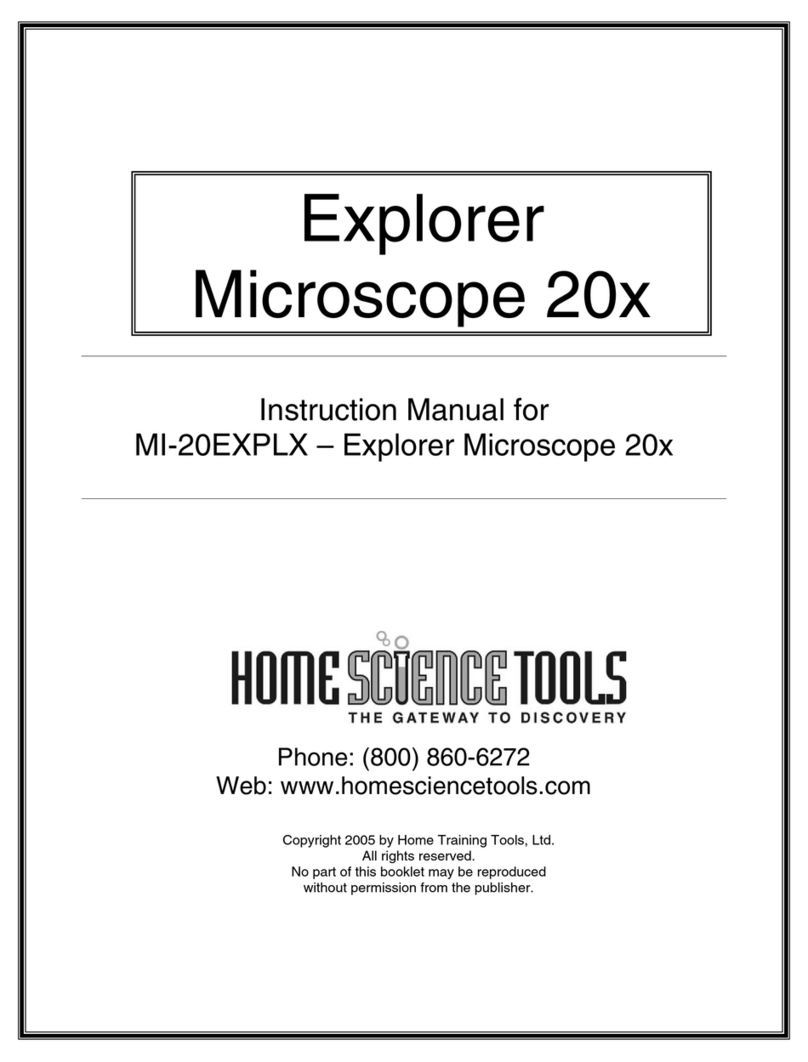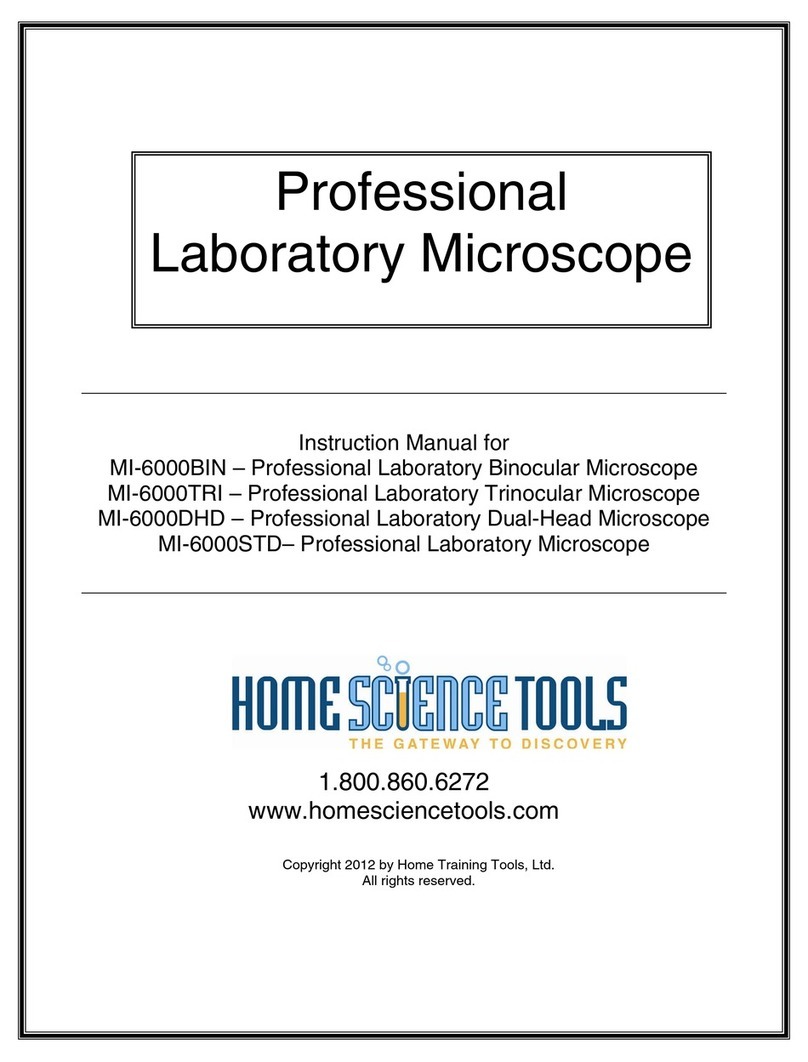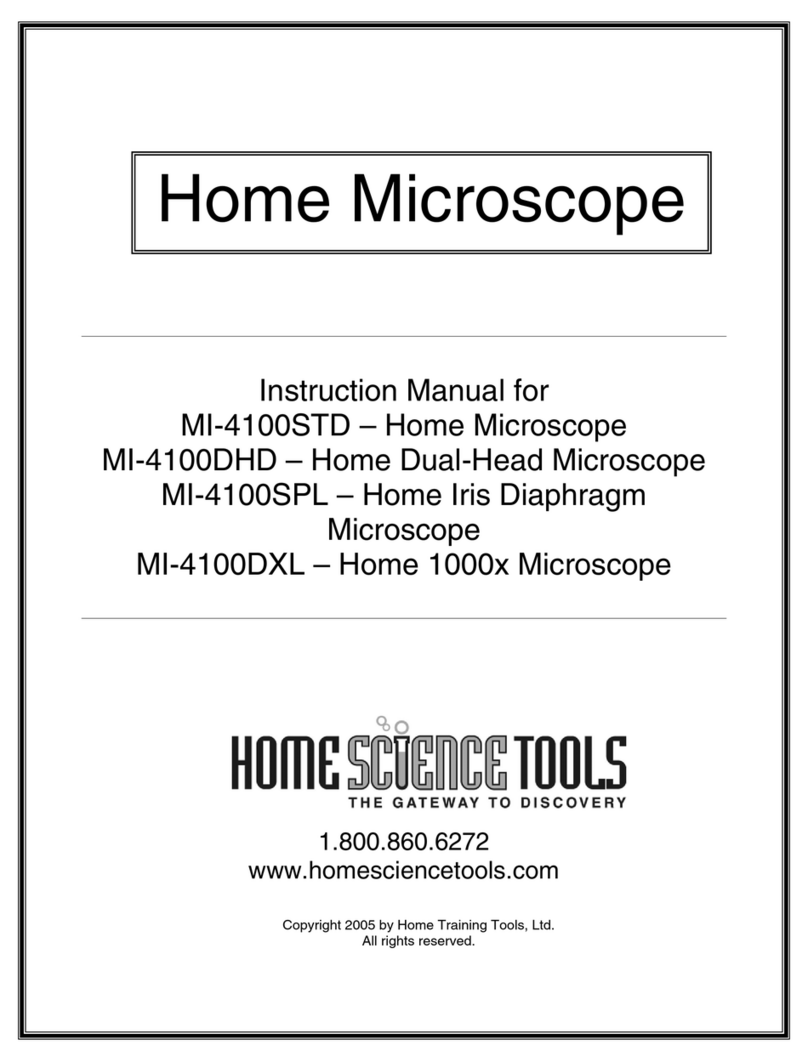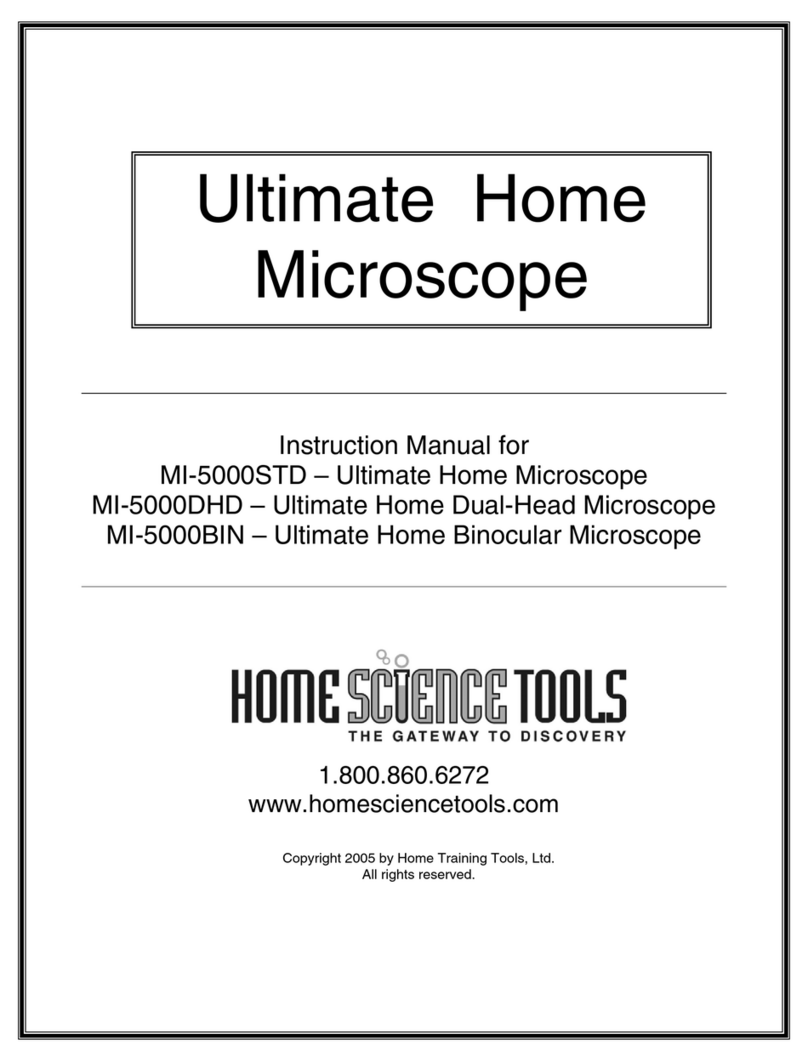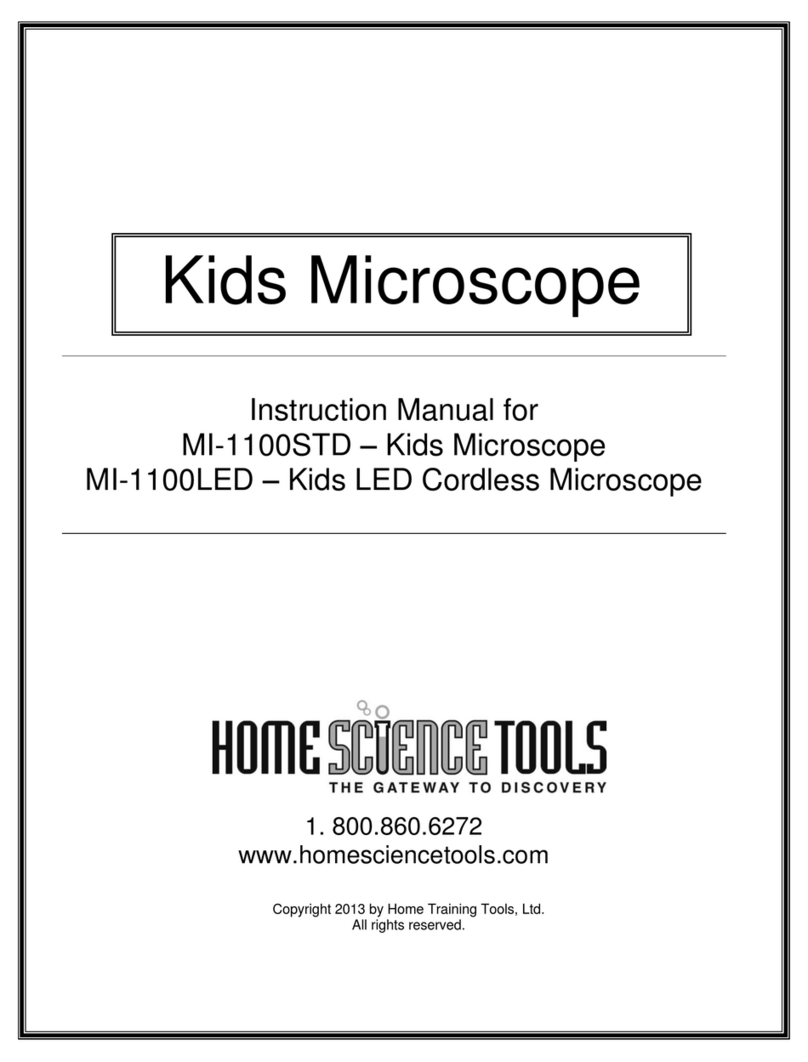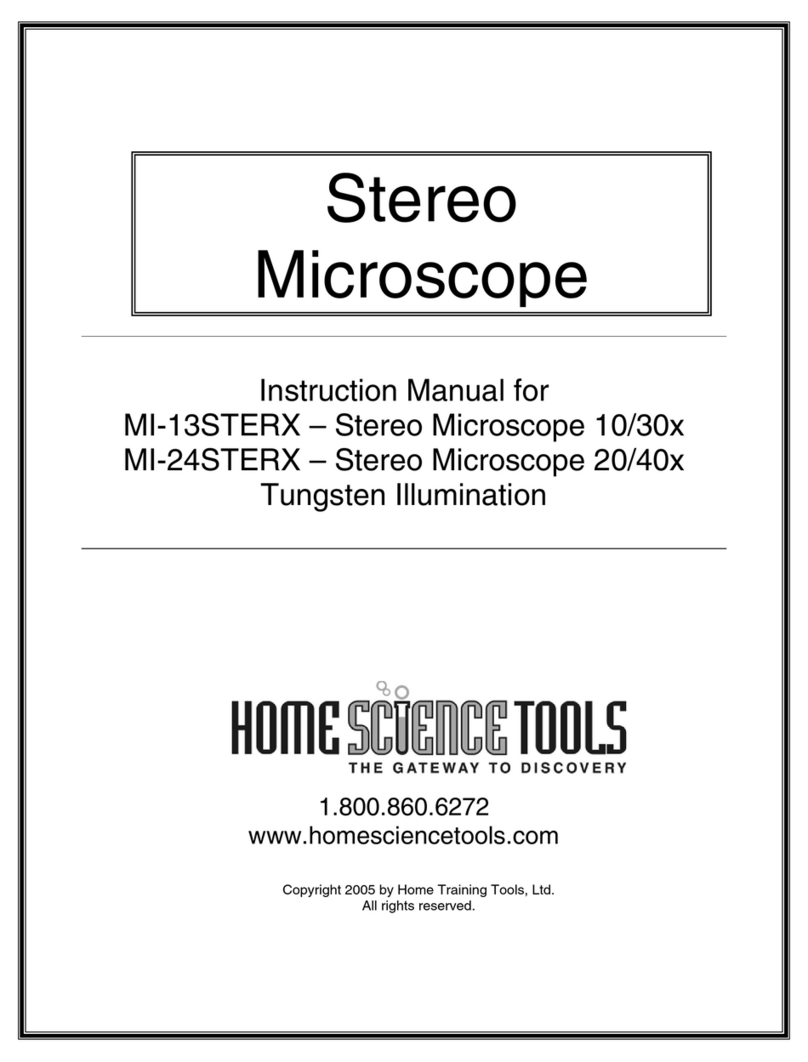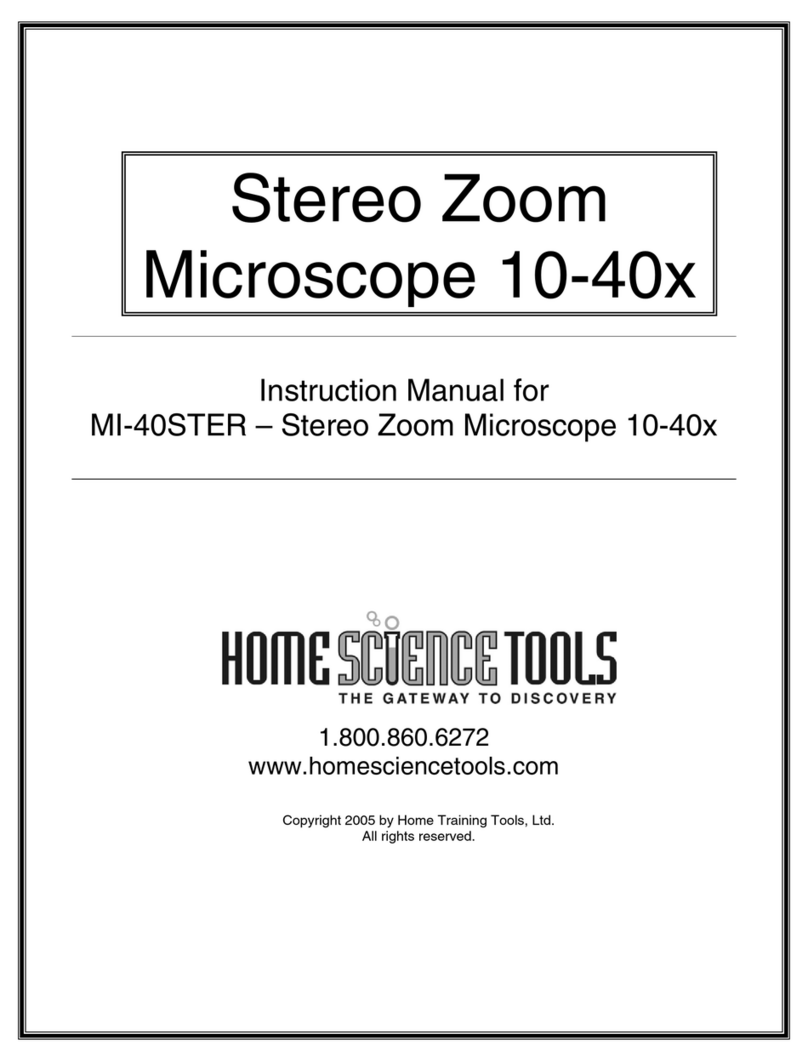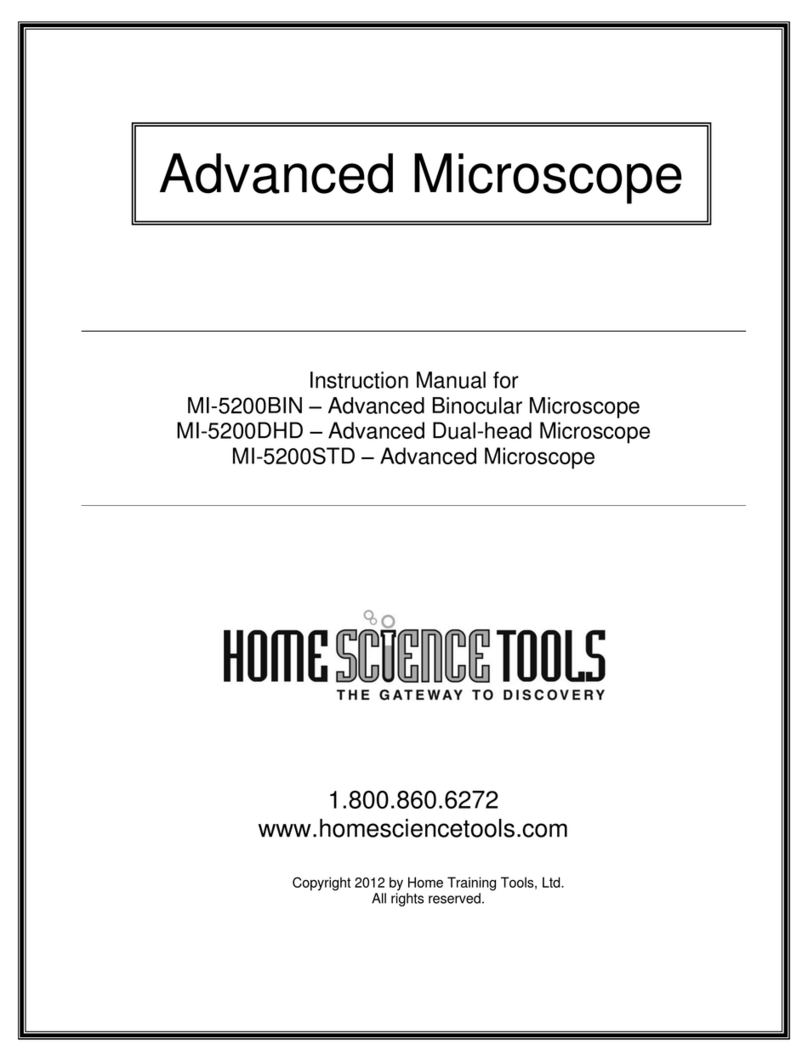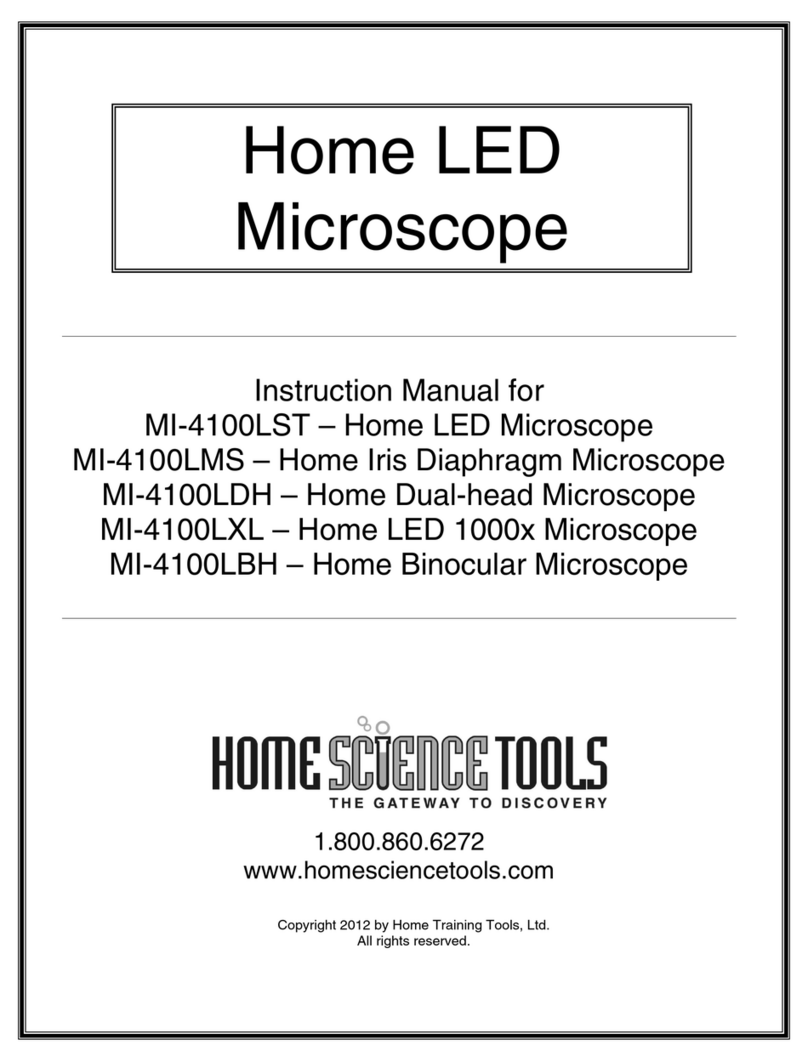© Home Science Tools. All Rights reserved. 3 of 8 406.256.0990 | www.homesciencetools.com
Description of Components
1. Eyepieces: This is the part of the microscope you
look through. It is inclined at a 30º angle for
comfortable viewing. Premium 18 mm lenses magnify
10x and offer high eye relief for use with glasses.
2. Rotating head: The head rotates 360º so users may
locate the most comfortable position and lock the
head in place. The MI-5200BIN model has a
Seidentopf binocular head, which means there are
two eyepieces. See page 6 for descriptions of the
different heads on the MI-5200DHD and 5200STD
models.
3. Arm: The arm supports the head and nosepiece and
is the best “handle” for picking up and moving the
microscope.
4. Nosepiece: Also called the “objective turret,”it holds
the objective lenses and rotates 360º. Change
magnification by turning it until the lens you want to
use “clicks” into place.
5. Objective lenses: These are the lenses closest to
the specimen. The objectives are 4x, 10x, 40x, and
100x, which multiply with the 10x eyepiece lens to
provide 40x, 100x, 400x, and 1000x magnification
levels. The shortest lens offers the lowest
magnification level, while the longest offers the
highest. The objectives have the following
characteristics:
•They are DIN –they meet an international
standard of optical quality.
•They are achromatic –they help prevent
color distortion.
•They are parcentered –if you center your
slide using one objective, it will still be
centered when you move to another
objective.
•They are parfocal –if you focus your
specimen using one objective, it will stay
coarsely focused when you move to another
objective (you will still have to adjust the fine
focus).
•The 40x and 100x objectives are retractable
–the tip containing the lens is spring-loaded
to prevent damage to the objective or slide.
•The 100x objective is oil immersion –this is
described on page 5.
6. Stage stop: Also called a “safety rack stop,” this
screw and lock nut, located between the stage and
the arm of the microscope. It prevents the stage from
coming too far up and grinding against the objective
lenses. While it’s pre-adjusted by the manufacturer,
manual readjustment instructions are on page 7.
7. Stage: The stage is the platform supporting the
specimen slide below the objective lenses. It moves
up and down when you turn the focus knobs, allowing
you to control the distance between the specimen and
the lens. The 125 x 130 mm stage has an integrated
mechanical stage with 30 mm y and (front/back) 70
mm x (right/left) movement. The x-y coaxial stage
adjustment controls allow precise movement of the
slide for optimal viewing.
8. 1.25 N.A. Abbe condenser: This movable lens in the
center of the stage condenses and focuses the light
rays from the illuminator to provide better image
resolution. Rotate the condenser knob to raise or
lower the lens.
9. Iris diaphragm: The diaphragm controls the amount
of light coming through the specimen in order to
provide the best contrast for the objective lens. It is
fully adjustable by moving the lever below the stage.
Generally, you need less light on lower power and
more light on higher power.
10. Filter holder: Your microscope comes with blue,
green, and yellow filters that go in the filter holder
beneath the iris diaphragm. The filter absorbs some
of the light from the illuminator and makes the light
change color slightly. Though generally unnecessary,
this enhances the specimen image in some cases.
11. Coarse focus: The large coaxial coarse focus knob
raises or lowers the stage until the image is in focus.
The focus mechanism uses a slip clutch to prevent
damage to the gears.
12. Fine focus: The smaller fine focus knob is coaxial
with the coarse focus, which means they turn on the
same axis. This knob allows more precise image
resolving after the image has been brought into focus
with the coarse focus knob.
13. Illuminator: The illuminator provides necessary light
underneath the stage with its long-life, cool-bright
LED bulb. Instructions for changing the bulb are on
page 6.
14. Illuminator intensity control: This control adjusts
the intensity of the light produced by the illuminator. It
should be in a low position when turning the
illuminator on or off. Use the iris diaphragm to adjust
the light for contrast; use the illumination intensity
control to adjust the light for brightness and intensity.
